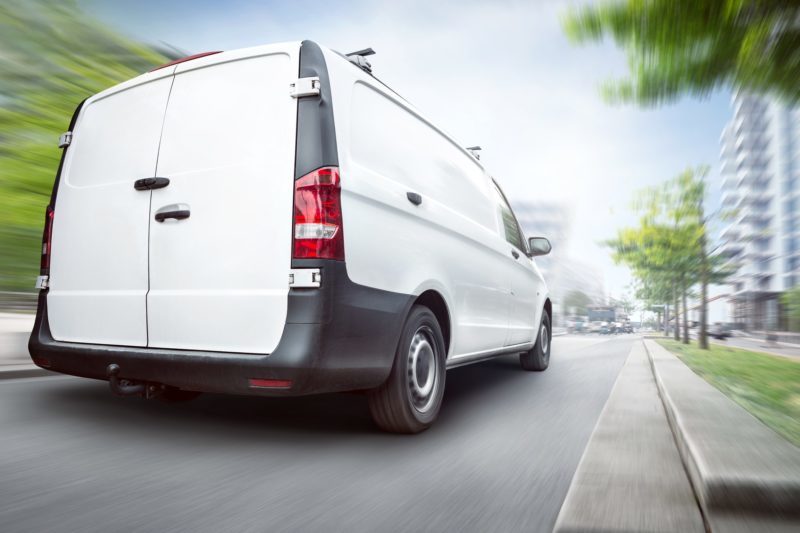There was a time when Domino’s Pizza offered a “30 minutes or it's free guarantee.” The concept offered the pizza buyer a no-lose proposal—get your pizza fast and hot or you don’t pay for it. That offer ended in 1993, when a series of accidents and lawsuits were attributed to Domino’s drivers putting profits ahead of public safety. One jury awarded a plaintiff over $78 million while several other cases were settled out of Court for smaller, yet still substantial, amounts. The harm to the community became paramount to the harm to public safety.
Today we have significantly more delivery trucks careening through our neighborhoods delivering packages at a pace often very different than what we are accustomed. In January 2019, a 9-month-old, secured in her car seat in the backseat of her mother’s Jeep, was killed by a driver delivering pallets of purchases from Amazon.com. The delivery driver, a subcontractor delivering Amazon boxes from suburban Boston to five locations in Maine, admitted he was running late and failed to spot the Jeep in time to avoid the crash. According to reports from Buzzfeed,The New York Timesand ProPublica, as many as 10 people have died in Amazon delivery accidents with hundreds of injuries and lawsuits. Amazon is shielded from liability as their drivers are contractors and not Amazon employees. In court, Amazon vigorously denies liability on the familiar argument that it does not control the delivery firms in its network or employ the drivers. And just as it had again and again—in cases of death, injury, and workplace mistreatment—the company invoked the carefully worded agreement it requires all delivery firms to sign, obliging them to defend and indemnify it from, or assume responsibility for, any and all legal claims.
The Amazon delivery system is made up of over 250 subcontractors across the United States. The Amazon Flex system is present in over 50 U.S. cities with many more projected to come on board soon. FEDEX Ground has already declined to renew its delivery agreement with Amazon, citing an unaligned future outlook (declining margins makes competition more affordable than partnership). Amazon has purchased 20,000 Mercedes-Benz vans to assist some of its Amazon Delivery Service Partners to establish their own company and become an Amazon contractor. The Amazon Delivery Service touts the business can be started for less than $10,000 with no logistics experience required. The flex.Amazon.com website requires that delivery drivers have a car that can “safely and reliably transport Amazon orders to its customers.” No mention of verification of this requirement is provided.
In a written statement to ProPublica and to BuzzFeed, which published an article last week on Amazon’s delivery practices, Amazon said: “The assertions do not provide an accurate representation of Amazon’s commitment to safety and all the measures we take to ensure millions of packages are delivered to customers without incident.”
As a retail owner in the community you have the ability to demonstrate that you strive to provide for the good of the whole community. This discussion provides the opening to remind your customers that short term or short-sighted opportunities are not paramount to the long-standing reputation for service and quality you are committed to delivering.
If We Don’t Have it, Ask Us!
From liquor stores to libraries, a common theme of customer service has long been to special order the customer what they want even if the product is not regularly stocked. Major retailers such as Target and Wal-Mart are scanning the Amazon sites to determine the products people are buying online. The retailers are reaching out to those vendors to develop a brick-and-mortar alternative to the online shopping experience. Target has recently launched a number of initiatives in this regard with one example being Anker Power Core Portable Chargers. At one time this brand was almost exclusively e-commerce. Several retailers carry the product in store now. The 26800 Anker Power Core is $69.99 in store at Target and $65.99 on Amazon. The immediacy, convenience and lack of the product being stolen from the porch makes the Target price difference reasonable. Many e-commerce retailers would likely accommodate your store if asked and it might be easier than you think to be competitive with online pricing. Proactively asking customers for suggestions of additional product choices also provides a barometer of emerging trends that might not be easily recognized otherwise.
Results from a survey of more than 1,700 consumers, which was conducted by the University of Alabama at Birmingham's Collat School of Business, show that as retailers' community engagement increases, the impact of economic value decreased. The cost of the product to the consumer is balanced with the benefits of the product. Consumers take into account extrinsic value provided through customer service and personal attention and weigh it against simply low price. Community engagement is a relatively low-cost effort resulting in greater customer loyalty and referrals.
Some Ideas for Community Building:
- Get Personal—Create a display that celebrates the community and the people you serve. Recognize birthdays and engage the customers as neighbors instead of sales opportunities.
- Offer Assistance—The speed and sincerity of assistance in times of crisis is impactful to the long-term appreciation.
- Educate—People want to learn. By becoming a place of education that offers experts and thought leaders, your retail home becomes more valuable to the community.
- Sponsor Events—Every community has an event of importance and becoming an active contributor is noticed. If you sponsor a youth league team, show up to events and become part of the community. If you don’t have a sponsorship budget, add community events to your newsletters.
- Contribute Time—Owners and employees benefit by engaging in the community outside of the store.
Note: The views and opinions expressed here are those of the author(s) and contributor(s) and do not necessarily reflect those of the publisher and editors of WholeFoods Magazine.









